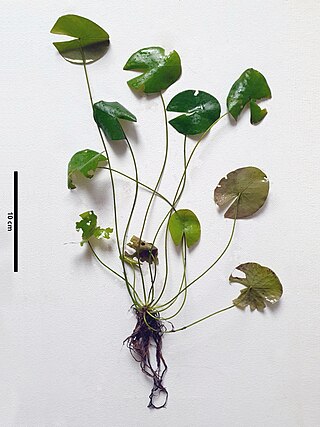Top Qs
Timeline
Chat
Perspective
Nymphaea dimorpha
Species of water lily From Wikipedia, the free encyclopedia
Remove ads
Nymphaea dimorpha is a species of waterlily endemic to Madagascar.[1]
Remove ads
Description




This species exhibits two distinctive growth forms. The submerged growth form has very thin foliage with short petioles. The emergent form has floating leaves with longer petioles.[2]
Remove ads
Cytology
The chromosome count is n = 14. The genome size is 449.88 Mb.[3]
Reproduction
Generative reproduction
Cleistogamy occurs in this species. It can produce flowers, which never open, but self-fertilise and never reach the water surface.[2][4]
Habitat
It grows in pools of water among slowly flowing streams.[2] The pools, which are darkened with organic material, are shaded by the canopy of tropical forest.[5]
Taxonomy
Taxonomic history
This species was first described as Nymphaea minuta K.C.Landon, R.A.Edwards & Nozaic in 2006. Later, it was discovered that this was a Nomen illegitimum, as the name was preoccupied by the French fossil waterlily Nymphaea minuta Saporta described in 1891. Therefore, the new name Nymphaea dimorpha I.M.Turner was chosen in 2014.[6]
Type specimen
The type specimen was collected in shaded rain pools beneath coastal forest near Tampolo, Madagascar in 1999.[7]
Placement within Nymphaea
It is a member of Nymphaea subgen. Brachyceras.[2]
Remove ads
Etymology
The specific epithet dimorpha references the two distinctive growth forms of this species.[6] The prefix di- means "two",[8] and -morph means shape.[9]
Cultivation
It is easily cultivated and suitable for low-light conditions.[2] In cultivation it may grow four times larger than plants observed in their natural habitat. This is due to better fertilisation.[5] It is very sensitive to cold temperatures.[10]
It is used in hybridisation to create new smaller waterlily cultivars.[4]
References
Wikiwand - on
Seamless Wikipedia browsing. On steroids.
Remove ads



